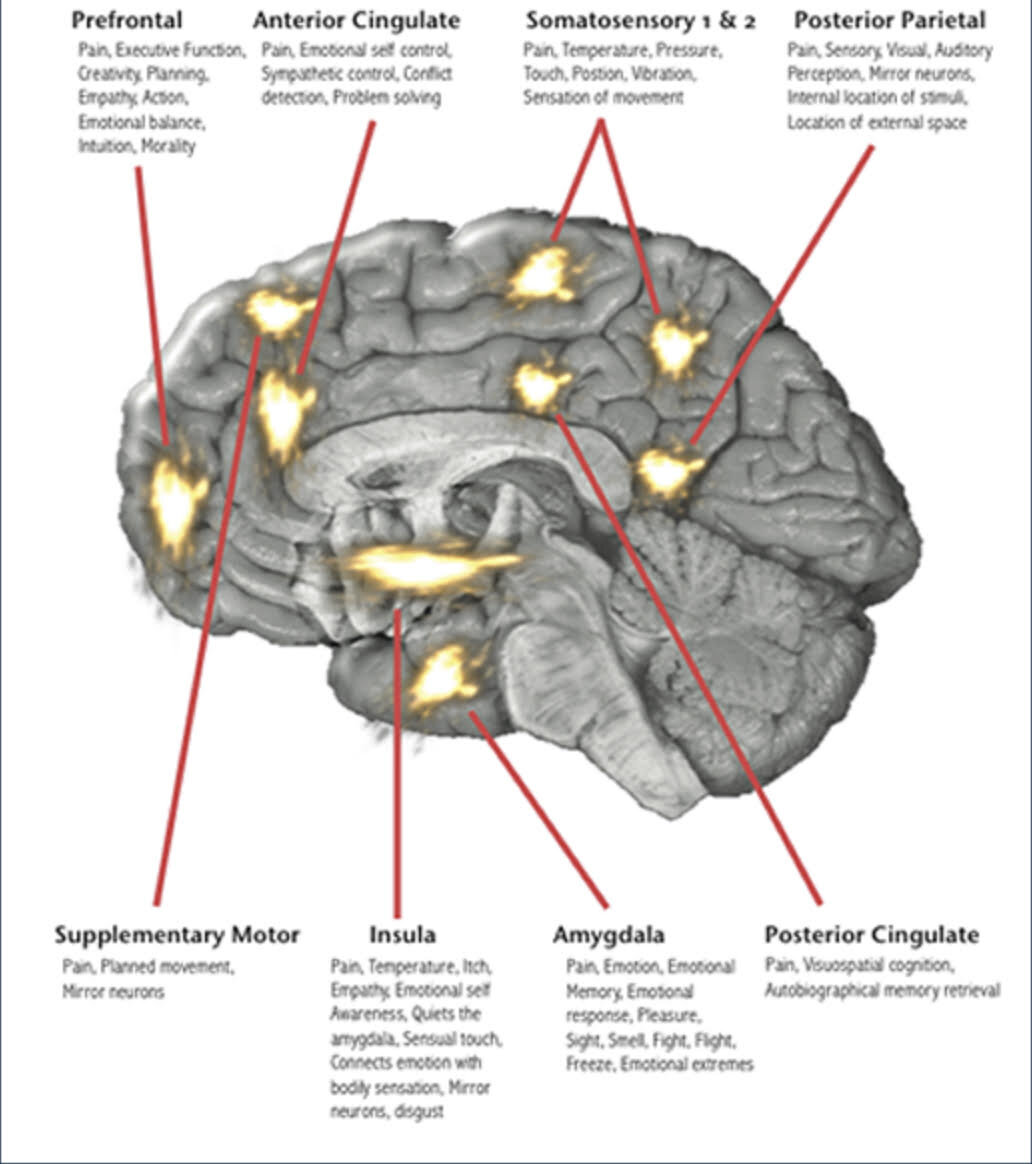Change Your Perspective, Change Your Pain
First impressions are very important. Sometimes, our first impression isn’t always the correct one. Our brains are designed to quickly process information and make a judgment call. This is great for survival and we wouldn’t have made it this long as a species without this quality, but it can often lead us into believing something that is not true.
.png)
At first glance, you might be concerned that a giant cat is about to ravage this neighborhood. It doesn’t take long for our brain to access stored information and conclude “they don’t manufacture polkadot collars that large”, and “I’ve seen tricky photographs like this before!”
Changing the way that we look at something can completely change its meaning. This is called perspective. Our perspective can influence our beliefs. Different truths can manifest as we open ourselves to different points of view. Check out this picture that changes seasons depending on the angle from which you view it:
Reframing a situation more positively can improve our well being. What perspectives do we have of ourselves and our bodies that might be distorted? Are we holding on to beliefs that don’t serve us while we recover from injuries? Can changing the way we think about our pain change our experience of pain? To answer these questions, lets first examine what pain is, and what it isn’t.
What is Pain And Where Does it Come From?
Pain is an experience that is produced by the brain. It doesn’t happen in the place that you feel it, nor does it happen in one particular area in the brain. Rather it is an output involving a network of neurons and locations.
.jpg)
(www.neuroplastix.com) you don’t need to read the text here, just know that all these places light up when pain is experienced.
Early scientists and philosophers believed that the experience of pain was the direct result of some input, popularized by Des Cartes:
.png)
What this suggests is that, if you place your foot near a flame, a signal quickly travels from your foot to your brain which then results in you feeling pain. Simple, right? Modern researchers have found that the process is much more complex. Our beliefs, mood, and cognitive skills, among many other factors, can contribute to the final experience of pain.
.png)
(Tracey I, Mantyh PW. The cerebral signature for pain perception and its modulation. Neuron. 2007;55:377–391)
This doesn’t carry the same meaning as “it’s all in your head”. Any time a human being feels pain, it’s in their brain; it can’t happen any other way. There are entire fields of study dedicated to the myriad of factors that contribute to pain. Today, we will take a glance at beliefs, and how we can change them to help our pain.
Is it really possible to change our beliefs?
Have you ever changed your mind about something before?
Something that you felt passionately about, that you came to realize was unfounded?
You may have discovered some wisdom or deeper truth that you did not see before. Belief is a uniquely human experience that cannot be used as proof of external reality. But reality can disprove our belief. If we remember the times our beliefs have been incorrect, we are more likely to be open to alternative perspectives.
Unhealthy Perspectives Towards Pain
“I’m feeling pain so there must be something damaged in my body.”
Pain is an alarm system for our body. Our brain is like a computer that is taking all sorts of data, contrasting it to memory, and determining if there are any potential threats to our survival. Pain is one way of alerting our system to a threat. The brain has to do this with incomplete information, and at times will produce sensations that don’t accurately reflect the severity or location of a problem.
“This pain will never go away.”
This is impossible to conclude. You can rightfully be frustrated at it’s persistence. But there may be relief from something you haven’t tried yet. Taking action towards a solution can inspire hope, and start the healing process.
“If I move, I will make my injury worse.”
There are very few situations in which movement will be detrimental to an injury. Finding the right type and amount of movement is key, and will almost always facilitate healing. If you are avoiding exercise while you are injured, you are likely doing your body and mind a massive disservice.
Healthier Perspectives Towards Pain
“I’ve had this pain or other types of pain before and they went away”.
When we are stressed/in pain and our limbic system takes over, the areas of our brain linked to reasoning become less active. Bringing your attention to memories with positive outcomes can break this cycle.
“This is an opportunity to learn more about my body and develop healthier habits”
Often, pain can be reflective of the overall state of our health. Addressing the root causes can give us insight into our behaviors, and spur us to develop better routines for maintaining health. At Move Strong PT inside of Cressey Sports Performance in Hudson, MA, we make sure to address these fundamentals, whether it’s sleep, hydration, aerobic exercise, or stress management. Working on these can facilitate healing and create resiliency.
“Will this still be a problem in 1 month? 1 year? 5 years? 10 years?”
(This obviously does not apply to injuries that are permanently debilitating)
I have a special talent for catastrophizing, so I often have to ask myself this question. The vast majority of injuries will restrict us from the activities we love for a few months, perhaps a year down the road. If you can reflect on this and set goals accordingly, then you can work towards solutions and spend less time perseverating.
Isn’t This Just Lying To Myself?
No, it is not. You are convincing yourself. I don’t think this is a bad thing. Being open to convincing is just being open minded. If you were never convinced of anything, you would never change and grow. New perspectives still must carry truth and resonate with you. If attempting to take on any particular perspective doesn’t work for you at a given time, come back to it later. Changing your perspective isn’t typically going to make your pain completely disappear. But it can turn down the dial on its intensity, which can increase the effectiveness of other treatments - such as movement. Changing your outlook takes a lot of work, and won’t be completely accomplished in a day or a week. Like any other skill worth learning, it takes time and practice to gain competency and get results. Work at it a little bit every day, and you will likely see improvements in both your pain and your overall attitude towards life.
Written by Dr. Jared Packer. To learn more about Jared, check him out HERE.
Have you been dealing with an injury? Is it keeping you from doing the things you love and want to do in life? Well, you can either continue on as you have been or take that first step to moving and feeling better. Click HERE to get started.
Tags:

June 16, 2020


